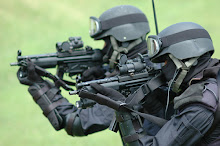
The deployment of the CV-22 Osprey tilt-rotor aircraft to North Africa this month for Operation Flintlock 09 overshadows the retirement of the long-serving MH-53 Pave Low helicopter. The final Pave Low mission was flow in Iraq in September by the Air Force’s 20th Expeditionary Special Operations Squadron.
Once numbering 39 helicopters, the Pave Low fleet was employed around the world for low-level missions to insert and take out special forces as well as for Combat Search And Rescue (CSAR) operations. The Sikorsky H-53 series is the largest helicopter flown in the West, with the largest (three-turboshaft) H-53E variants also flown by the U.S. Navy (MH-53E) and Marine Corps (CH-53E).
The Air Force retired the last MH-53M Pave Low IV variants -- all upgraded from earlier models -- in September. The Air Force is acquiring 50 Bell-Boeing CV-22 tilt-rotor aircraft for the special operations role. The CV-22 and MH-53 are roughly the same size (but with very different configurations); however, the Osprey is much faster and has a greater range, and is provided with an in-flight refueling capability. (In July 2006 two MV-22s flew across the Atlantic in the first trans-ocean flight of the aircraft.)
The Marine Corps has already forward deployed its Osprey variant, the MV-22. In October 2007 the Marines sent ten MV-22s to Iraq, where they continue to operate. The Marines have a requirement for 360 MV-22s for the assault and combat support missions, replacing the long-serving CH-46 Sea Knight helicopter. (The original Marine requirement -- developed during the Cold War era -- was for 552 MV-22 aircraft.) The Marines currently have four MV-22 deployable squadrons plus a transition squadron, with a schedule to activate two additional squadrons per year.
http://www.defensetech.org/



No comments:
Post a Comment